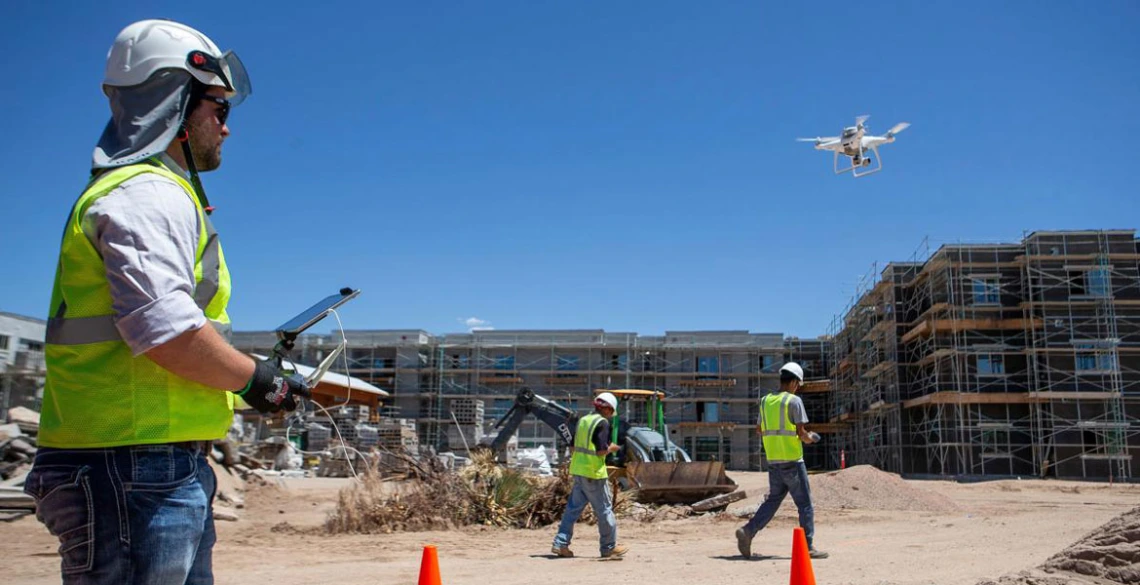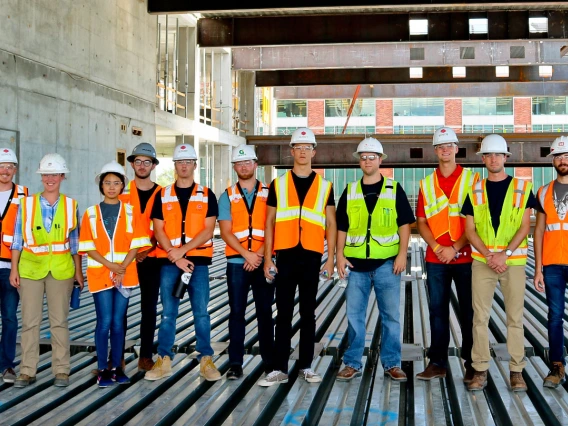Robots and Drones Are Clocking In on Construction Sites
UA engineering students are keeping pace with the latest technology as AI makes its way into the construction industry.

Dean Miller, a virtual construction technician for Sundt Construction, demonstrates how the company uses drones in their workflow. While drones aren't currently displacing existing jobs, advancements in their capability could change that. (Photo: Josh Galemore / Arizona Daily Star)
Drone painters, robot masons and bionic workers may one day be a common sight on construction sites.
Advances in artificial intelligence, coupled with an ongoing labor shortage, have construction companies looking for options to the traditional laborer.
Job titles such as robotics technician and virtual construction supervisor are now listed on recruiting sites.
And the University of Arizona College of Engineering is looking to add classes on these technical advances to its civil engineering program.
Tucson-based Sundt Construction Inc. has 15 drones working in fleets across Arizona, Texas and California that are tasked with capturing photo documentation and mapping data.
We've got to prepare our students for what's next."
For example, when building on top of a closed landfill, the drone can calculate how much material is being moved at any given moment, giving the client exact information on progress.
Before, someone would be counting the number of trucks coming in and out of the area to estimate progress, not knowing how full each truck might be, explained Eric Cylwik, senior virtual construction engineer for Sundt.
“With the ability to fly these drones we can measure the exact volume of how much material has been moved,” he said. “Then we can compare that surface to the week prior to show the client the progress that’s been made.”
When clients give Sundt plans for their projects, the company can lay drone imaging over the site to identify where pipes and other infrastructure should be placed.
“Before, we took a paper copy of the plans out into the field and used a tape measure, which could take half a day,” Cylwik said. “With the drone it takes about 30 minutes in the field and an hour of computer time, crunching the data.”
Dean Papajohn, associate professor of practice in the Department of Civil and Architectural Engineering and Mechanics at the University of Arizona, embraces the technology.
“We’ve got to prepare our students for what’s next,” he said. “Academic institutions don’t always keep up with what is current.”
Papajohn was a civil engineer manager with Pima County’s Department of Transportation when he met with UA civil engineering staff.
“We said we would like to hire the civil engineering students, if they had some background in construction,” he said.
Two problems.
No one in the civil engineering department knew much about construction, and the UA didn’t have the money to add the curriculum.
The private sector stepped up to fund the Construction Engineering Management program and Papajohn became a full-time professor in 2015.
This fall he plans to introduce civil engineering students to drones and their role in earthwork measurements, thermal mapping and traffic patterns.
“Our students are engineers and will be overseeing projects but need to understand what’s happening at construction sites,” Papajohn said. “I don’t see, at least in the near future, where robotics and artificial intelligence are going to take over ... but we’re moving more in that direction.”


